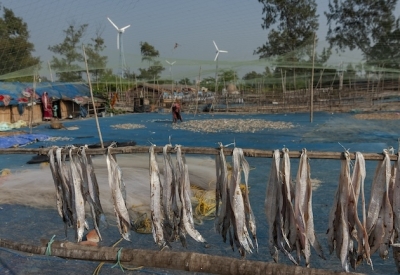London [UK], January 26 (ANI): Researchers have found that cancer cells can alter their size to survive medication therapy or other environmental stressors.
Researchers at The Institute of Cancer Research in London used biochemical profiling technology and mathematical analysis to demonstrate how genetic variations affect cancer cell growth and how these variations might be taken advantage of by future therapies.
The researchers believe smaller cells could be more vulnerable to DNA-damaging agents like chemotherapy combined with targeted drugs, while larger cancer cells might respond better to immunotherapy.
The study was published in the journal Science Advances.
It combined innovative high-powered image analysis with examination of DNA and proteins to study size control in millions of skin cancer cells.
The skin cancer melanoma is driven by two different genetic mutations — 60 per cent of cases are caused by a BRAF gene mutation, while 20 to 30 per cent of cases are caused by an NRAS mutation.
The researchers set out to investigate the differences in size and shape of skin cancer cells harbouring the two mutations, by using mathematical algorithms to analyse huge amounts of data on DNA and proteins.
The major difference was cell size. BRAF-mutant cancer cells were very small whereas NRAS-mutant cancer cells were much bigger. Drug resistant NRAS cells were even bigger.
Smaller cells appear to be able to tolerate higher levels of DNA damage, as they are very concentrated with proteins that repair DNA — like PARP, BRCA1, or ATM1 proteins.
The ICR researchers believe that this could make them more vulnerable to drugs like PARP inhibitors — drugs blocking proteins responsible for repairing DNA damage — especially when combined with DNA-damaging agents such as chemotherapy.
In contrast, the larger NRAS-mutant cancer cells contained damage to their DNA instead of repairing it, accumulating mutations and enlarging. These larger cells were not as reliant on DNA repair machinery, so using chemotherapy and PARP inhibitors against them might not be as effective.
Scientists believe larger cells could be more responsive to immunotherapy — because their larger number of mutations could make them look more alien to the body. They are already exploring this theory with further studies.
The researchers believe BRAF and NRAS mutations may be driving the differences in cell size by regulating levels of a protein known as CCND1 — which is involved in cell division, growth and maintaining the cytoskeleton — and its interactions with other proteins.
While the study focused on skin cancer cells, researchers suspect that this size-shifting ability and its impact on treatment response is common to multiple cancer types. They have already identified similar mechanisms in breast cancer and are now investigating whether the findings could apply to head and neck cancers.
The discovery provides new insight into how the size of cancer cells affects the overall disease, allowing for better predictions of how people with cancer will respond to different treatments simply by analysing cell size.
Existing drugs could even be used to force cancer cells into a desired size prior to treatments like immunotherapy or radiotherapy, which could improve their effectiveness.
Study leader Professor Chris Bakal, Professor of Cancer Morphodynamics at The Institute of Cancer Research, London, said, "We think of cancer as out of control and unpredictable, but we used image analysis and proteomics to show for the first time that certain genetic and protein changes lead to a controlled change in the size of cancer cells. Cancer cells can shrink or grow to enhance their ability to repair or contain DNA damage, and that in turn can make them resistant to certain treatments.
"We think our research has real diagnostic potential. By looking at cell size, pathologists could predict whether a drug will work, or if the cells will be resistant. In the future, it might even be possible to use AI to help guide the pathologist, by making a rapid assessment about the size of cells and so the treatments that are most likely to work.
"We also hope our discovery will lead to new treatment strategies — for example creating drugs to target the proteins that regulate cell size."Professor Kristian Helin, Chief Executive of The Institute of Cancer Research, London, said, "This intriguing, fundamental study provides a correlation between genetic alterations in skin cancer cells and cell size. It opens the potential of using genetic alterations and cell size as biomarkers for how skin cancer will respond to treatments. It’s particularly exciting that cell size could also be an important biomarker for how other cancers, such as breast or head and neck cancers, respond to treatments." (ANI)






